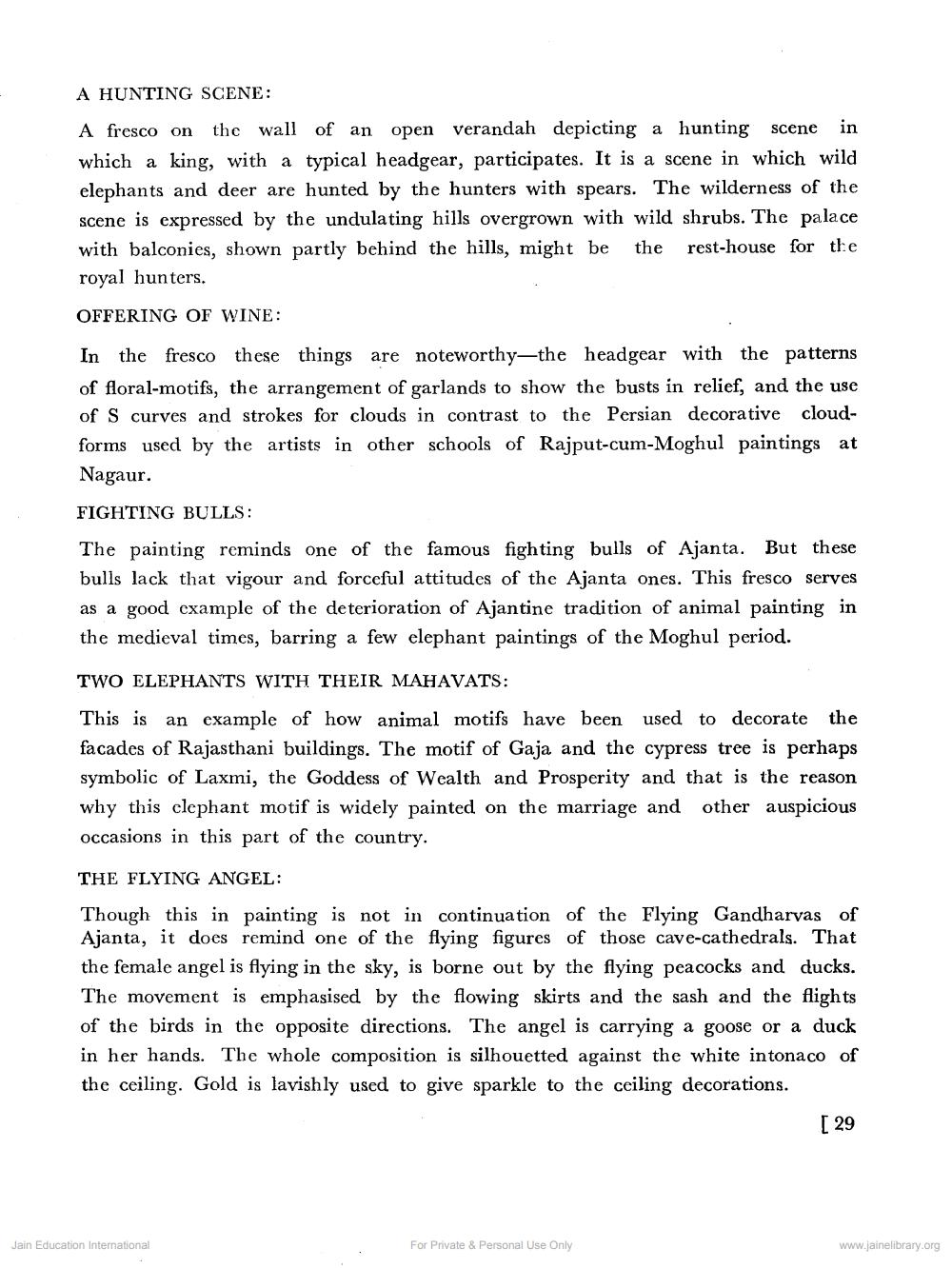________________
A HUNTING SCENE:
A fresco on the wall of an open verandah depicting a hunting scene in which a king, with a typical headgear, participates. It is a scene in which wild elephants and deer are hunted by the hunters with spears. The wilderness scene is expressed by the undulating hills overgrown with wild shrubs. The palace with balconies, shown partly behind the hills, might be the rest house for the royal hunters.
OFFERING OF WINE:
In the fresco these things are noteworthy—the headgear with the patterns of floral-motifs, the arrangement of garlands to show the busts in relief, and the use of S curves and strokes for clouds in contrast to the Persian decorative cloudforms used by the artists in other schools of Rajput-cum-Moghul paintings at Nagaur. FIGHTING BULLS:
The painting reminds one of the famous fighting bulls of Ajanta. But these bulls lack that vigour and forceful attitudes of the Ajanta ones. This fresco serves as a good example of the deterioration of Ajantine tradition of animal painting in the medieval times, barring a few elephant paintings of the Moghul period.
TWO ELEPHANTS WITH THEIR MAHAVATS:
This is an example of how animal motifs have been used to decorate the facades of Rajasthani buildings. The motif of Gaja and the cypress tree is perhaps symbolic of Laxmi, the Goddess of Wealth and Prosperity and that is the reason why this clephant motif is widely painted on the marriage and other auspicious occasions in this part of the country.
THE FLYING ANGEL:
Though this in painting is not in continuation of the Flying Gandharyas of Ajanta, it does remind one of the flying figures of those cave-cathedrals. That the female angel is flying in the sky, is borne out by the flying peacocks and ducks. The movement is emphasised by the flowing skirts and the sash and the flights of the birds in the opposite directions. The angel is carrying a goose or a duck in her hands. The whole composition is silhouetted against the white intonaco of the ceiling. Gold is lavishly used to give sparkle to the ceiling decorations.
[ 29
Jain Education International
For Private & Personal Use Only
www.jainelibrary.org




